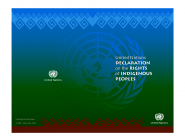Beginnings and Official Establishment
It is well known that our people have, in general, lacked effective officially recognized charitable and humanitarian associations. The primary cause of this has been the policies of oppression and persecution against our people by all the regimes that have governed Iraq.
After the events of March 1991, thousands of families left their homes, cities, and villages and fled to the borders of Turkey and Iran, searching for refuge from the terrors of Saddam Hussein's regime. In these areas they remained in the open, under trees in the ravines and the mountains, exposed to cold and rain.
A group of energetic people organized to distribute financial and other urgent necessities. Later this same group organized the distribution of aid that started being received from international organizations and Assyrians around the world.
After conditions in northern Iraq stabilized with the imposition of the no-fly zone, the refugees returned to ruined villages and cities badly in need of reconstruction. The people lacked the simplest of necessities of living due to the sanctions imposed on Iraq and because of the policies of the Saddam Hussein regime.
The Assyrian Aid Society - Iraq (AAS-I) was formally and officially established in the spring of 1991, growing from the core of the pre-war refugee relief organization. AAS-I was one of the very first humanitarian organizations in the region working and coordinating with the United Nations (UN) agencies just beginning their own local and international humanitarian work in Iraq. AAS-I cooperated with other international and local organizations as well. The humanitarian program of our society quickly expanded to include the distribution of the aid, food, and medicine, plus sending mobile medical clinics to the most remote villages. Village rehabilitation programs included providing agricultural tools and utilities that would provide income and independence, thus helping to maintain an Assyrian population in the Homeland.
As a principal goal AAS-I dedicated itself to accomplishing the teaching of our children in our Assyrian language. This plan required action at every level of the teaching process; specifically, providing the needed Assyrian curriculum books, the transportation of the students, the salaries of the lecturers, the costs of building and maintaining the dormitories, and much more.
The establishing of social organizations such as the students' unions, youth unions, women's unions, cultural centers, social centers, and sport facilities depended in large upon the support of the Assyrian Aids Society-Iraq, either through the efforts of gaining necessary financial and other support from Assyrians abroad or from other humanitarian and charity organizations.
The establishment of the Assyrian Aid Society of America in the United States was crucial. As our main and most consistent source of funding, AAS-A insured our Society's activities in the Homeland, especially the process of teaching in the Assyrian language.
Our assistance to the needy villages and the needy families in all the cities and towns continued. This need was at its peak and the living and economic levels were at their worst, during the years of the international sanctions against Iraq, but the needs of our people remain.
It is worth noting that the administrative officers in Assyrian Aid Society-Iraq are all volunteers, except for the engineering and technical groups that do receive proper salaries for their work. We may also mention that one of the priorities of the Society has always been to engage our people in voluntary efforts, to engage the villagers who benefited from the projects and the Society's charity activities.
The efforts to develop and expand the AAS-I activities in all the fields continued and grew into specialized departments.



